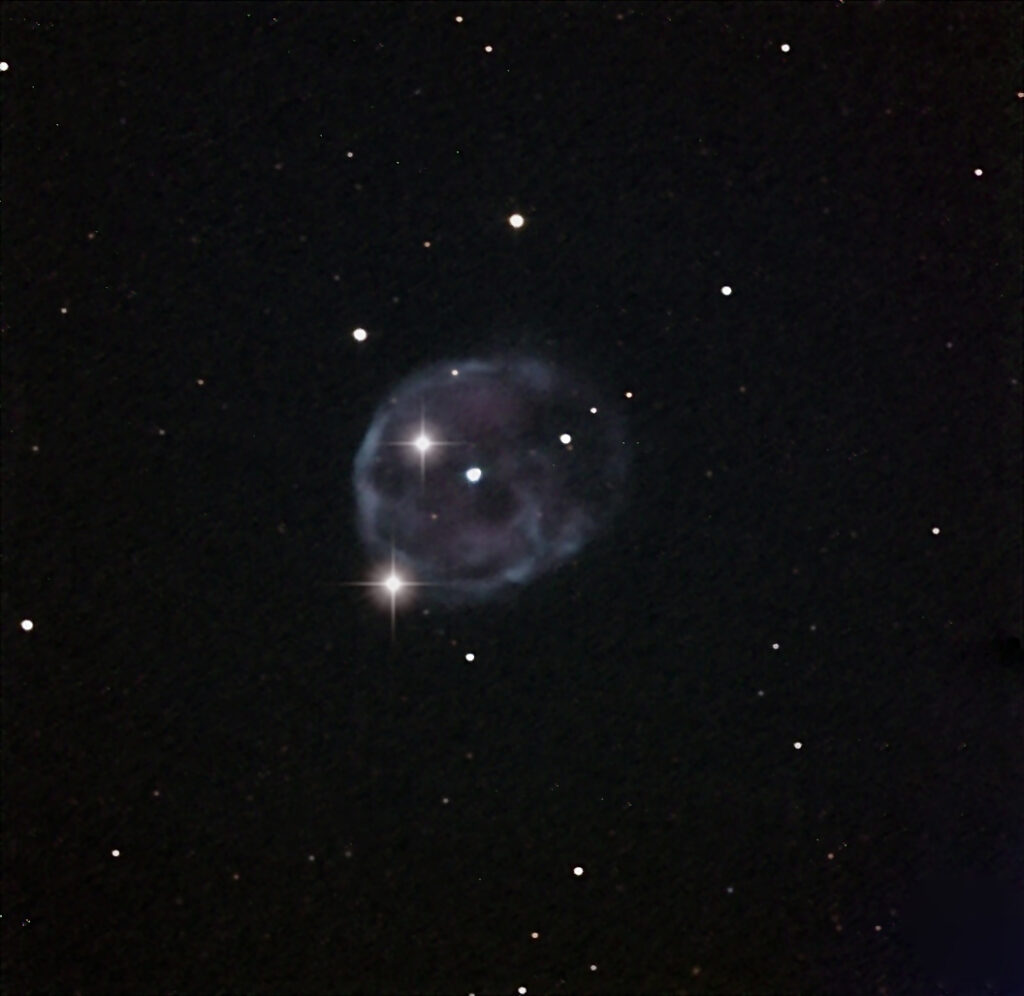NGC 246 is a planetary nebula 1,600 light years away in the constellation Cetus (the "whale"). A planetary nebula results when stars with an initial mass of up to 8 times the mass of our Sun (about 95% of all stars) collapse at the end of their burning cycle when diminishing fuel is inadequate to produce fusion reactions sufficient to offset the inward and inexorable force of gravity. The inward collapse is abruptly halted by a force known as electron degeneracy (electrons resist occupying the same quantum state) if a star's final mass is below the "Chandrasekhar limit" of 1.44 solar masses. This produces a powerful "rebound" effect with energy pouring outward and blowing away the outer atmosphere of the star, creating a magnificent planetary nebula. The remaining star is now the size of the Earth (a million times smaller than its original size), hot, and extremely dense, with a tablespoon weighing several tons. These stars no longer emit energy based on nuclear fusion. Planetary nebulae are among the most beautiful objects in the universe.
For stars with initial masses greater than 8 or so solar masses the force of gravity overcomes the resistive force of electron degeneracy, producing either a neutron star or black hole.
As planetary nebulae continue to expand, they become larger and dimmer, meaning that they can be seen for only a relatively small window of time. But, because planetary nebulae represent the final stage in the life of stars of up to 8 solar masses (the overwhelming majority of stars) they are common enough that there always are some visible.
The "Pacman" or "Skull" Nebula (NGC 246)
Date Taken:July 27, 2014
Location Taken:Siding Spring Observatory, NSW Australia
Conditions of Location: Equipment Used:Planewave 17" corrected Dall-Kirkham telescope, FLI PL4710 camera
Processing Used:8 x 5 minutes luminance, 8 x 3 minutes RGB, for a total exposure of 1 hour 52 minutes, processed in Maxim DL and Photoshop
Distance from Location:1,600 light years
Constellation:Cetus
Other Link:
